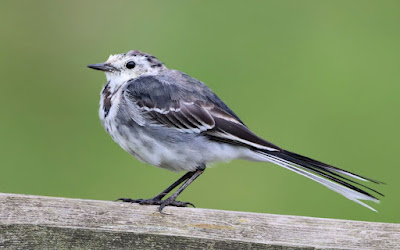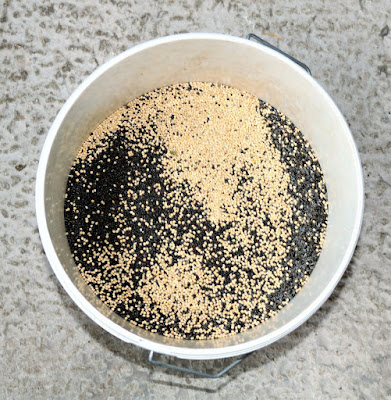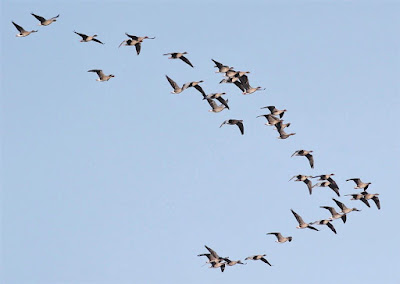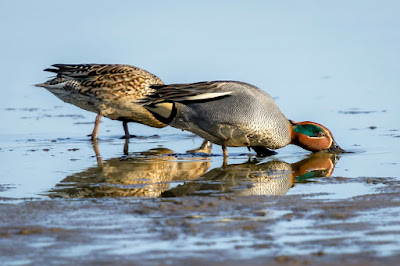The forecast for Wednesday was looking like the best and only day for a spot of ringing. I met up with Will over Pilling way to a touch of westerly a breeze, a little cloud and a single jacket for the early cool. How the year has flown when the 0630 start seemed like half way through the day.
We set a few nets in the usual ride and decided to have go in this year’s seed plot where some preparatory work in the last few weeks established an area that should catch a variety of finches and buntings, maybe even a warbler or two. This year’s plot is somewhat different since the farm’s on-the-ball owners enhanced the normal mix with a bird food concoction that’s grown like crazy in 2023’s ideal growing season.
Sunflowers
Things looked good when small groups of Linnets began to arrive, some settling in a nearby hedgerow and others taking a peek at the seed plot without staying around. The seed plot caught a couple of Reed Buntings but none of the 50 and more Linnets that flew around and over without finding the single panel mist net in the middle of the plot of ground. We agreed, it’s early doors and the net ride will need a little widening together with some introduced bird seed until the sunflowers and the others produce seed in a few weeks time.
Linnets
The congregation of Linnets has already captured the attention of a Sparrowhawk with a determined female flying through and over the seed plot on three or four occasions in trying to flush out and then capture a Linnet sometimes with the not commonly seen slow flapping flight so reminiscent of a harrier species
Sparrowhawk
In other nets we caught two Reed Warblers, a Great Tit and a Wren.
The six birds symbolise the fruitless year of 2023 when our summer migrants may have had a poor year, something highlighted by other fieldworkers.
If certain migrant species have had a poor year, that will feed through into the data collected by all BTO/JNCC/RSPB Breeding Bird Survey volunteers and bird ringers plus others contributing to core schemes,.
Do we give up and have lie ins during unproductive times? No. In fact come Saturday morning we met up again at 0630 to have another go after Will spent Friday evening with his strimming device tidying the seed plot ride.
Another 7 birds ringed was nothing to shout home about - 1 Robin, 2 Blackbird, 2 Reed Bunting, 1 Wren and 1 Linnet. The single Linnet opened the autumn account for Linnets whereby our target for Linnet at the year end is 100 individuals.
Linnet
Linnet
Other birds seen on Saturday - 18 Tree Sparrow, 1 Sparrowhawk, 1 Buzzard, 25 Swallows and 4 House Martins flying south. 2 Snipe.
Snipe
Come Back soon for more news and views on Another Bird Blog.
Linking today to Eileen's Saturday.




.jpeg)




















.JPG)


























































.jpg)











